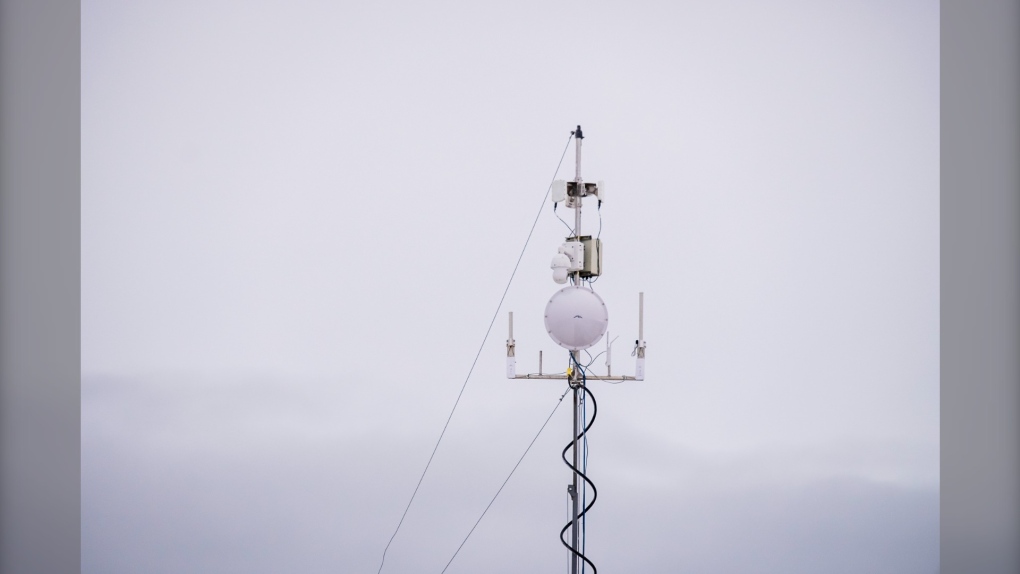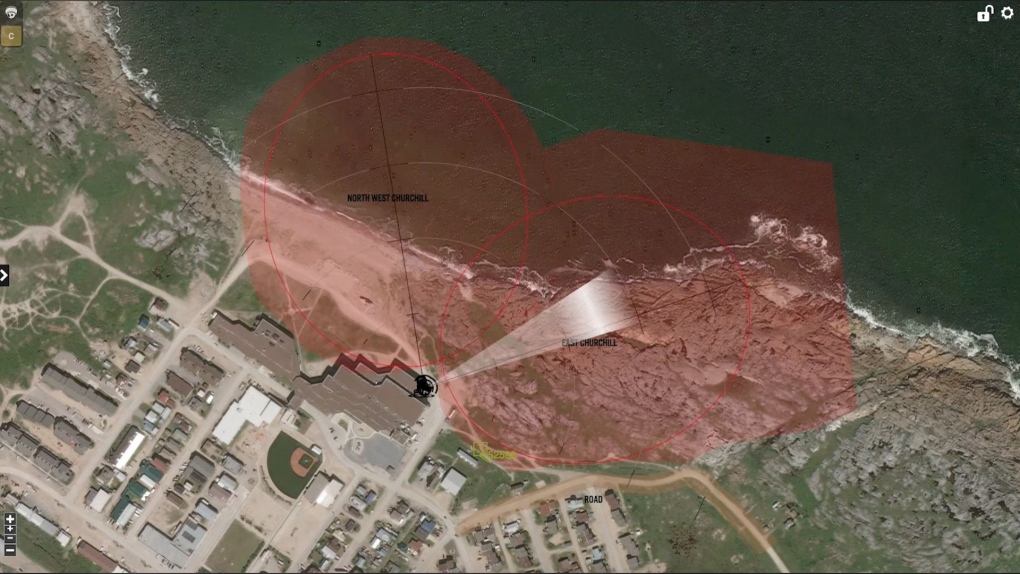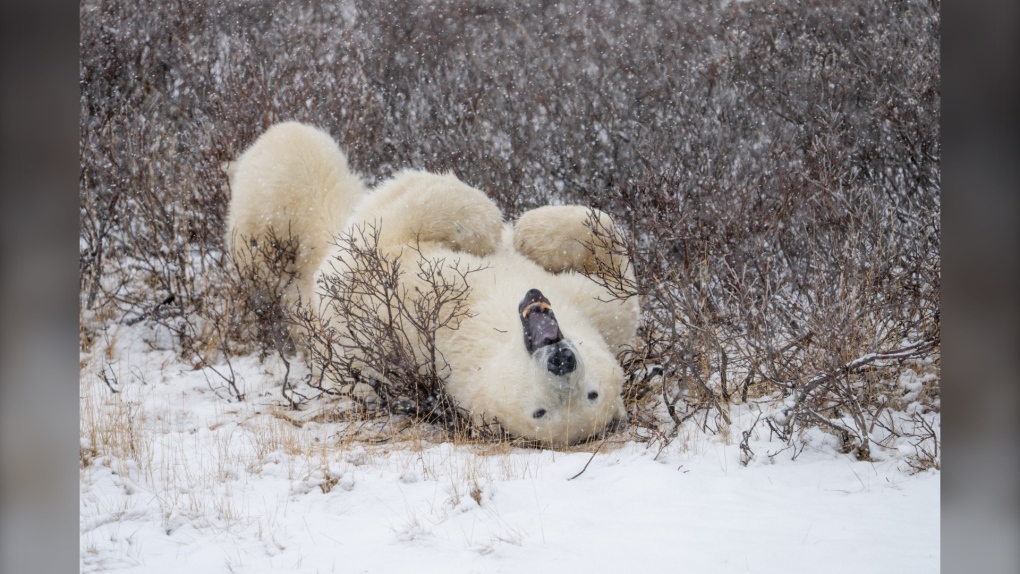New technology that was tested at the Assiniboine Park Zoo has arrived in Churchill to help track polar bears.
The AI tracking device was set up at the zoo in the summer to help teach the technology what was and wasn’t a polar bear.
Now, the device has made it to Churchill, where it will track the bears in northern Manitoba.
“It’s meant to detect polar bears and have the ability to differentiate between polar bears, versus people or other animals or vehicles,” said Kieran McIver, the manager of Churchill Field Operations with Polar Bears International.
 The “beardar” in Churchill on top of one of the tundra buggies. Uploaded Nov. 6, 2024. (Polar Bears International)
The “beardar” in Churchill on top of one of the tundra buggies. Uploaded Nov. 6, 2024. (Polar Bears International)
“The idea is hopefully to deploy it in the north in communities that have polar bears, and sort of create what you might consider a virtual fence. So it could act as an early detection system, alerting people when polar bears are entering an area.”
McIver said once a bear is identified, the AI would be able to completely track where the bear is and even send a text message or email alert to warn people of the situation.
With the decline in sea ice, there are more interactions between communities and bears. The tracking would help keep people and the bears safe with early detection.
 The “beardar” spotting a polar bear a far distance away in Churchill. Uploaded Nov. 6, 2024. (Polar Bears International)
The “beardar” spotting a polar bear a far distance away in Churchill. Uploaded Nov. 6, 2024. (Polar Bears International)
“There’s always that potential that the bear has to be destroyed due to it coming into a community and potentially hurting somebody or getting into something that they shouldn’t have,” said Raymond Friesen, a research support specialist with Polar Bears International.
“Those bears, ideally, would be deterred before coming into the community or towards a dump site or towards a dog yard.”
Now that it’s in its new environment, Friesen said they are having to calibrate the AI, telling it when it correctly identifies a polar bear.
“The hope is that when it gets really good at that, the human element isn’t a part of that check and balance anymore,” he said.
Friesen said it is already working well, and he recently got to experience it tracking bears late at night.
“I had the computer open, and we could see a bear and two cubs coming from a distance in the middle of the night. You couldn’t see it with your bare eyes, but all of a sudden, this alert came on the screen, I pointed a camera at it, (and with) the night vision, you could see a mom and two cubs way out there and it tracked them all the way in, right to the lodge.”
 A polar bear in northern Manitoba. Uploaded Nov. 6, 2024. (Erinn Hermsen/Polar Bears International)
A polar bear in northern Manitoba. Uploaded Nov. 6, 2024. (Erinn Hermsen/Polar Bears International)
While it is being used for polar bears right now, McIver and Friesen said this technology could be used to track other animals and do research all over the world.
“There’s no doubt that you’d be able to train it on other species or different animals and apply it in other parts of the world in similar ways,” said McIver.
“The technology is there to expand its use to other animals. It’d be a matter of training what that animal looks like to the radar,” said Friesen.
They said the hope is it will eventually be permanently stationed up north to track polar bears year-round.